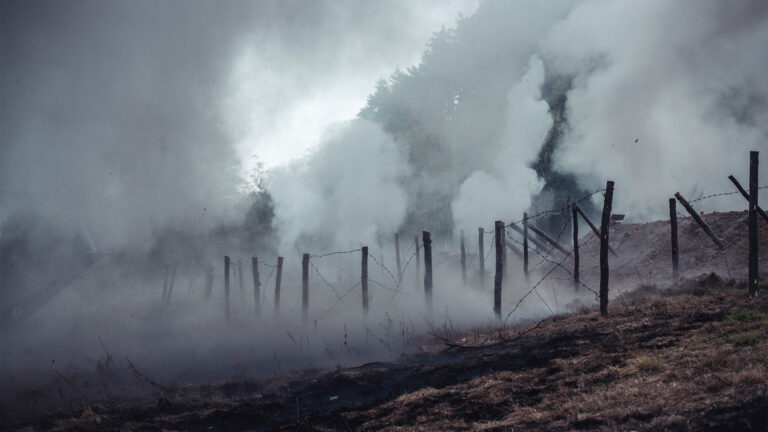A few weeks ago, Tommy Nelson, pastor of Denton Bible Church, in promoting an upcoming conference said that “wokeness” is “the most insidious and dangerous and pervasive ideology I have ever seen in all of my life.” Naturally, social media platforms erupted in commentary.
Some wondered how someone in ministry for fifty years could believe today’s threat from the left to be more serious than all of the subtle and overt expressions of white supremacy during the years immediately following the Civil Rights era. Others commended the pastor for addressing an issue of growing concern head-on.
I do not intend in this article to respond directly to Pastor Nelson’s comments, but to consider this controversy from another angle. This conversation raises a good question about how we as church leaders foresee and address potential threats in our day. Along those lines, I offer three suggestions.
1. Recognize that one aspect of Christian ministry is to protect the flock.
Christian leaders are called to look out for various dangers. The New Testament describes God’s people as a flock, and pastors in the role of shepherds. We’re called to “be on guard” for ourselves and for “all the flock the Holy Spirit has appointed” us as overseers, ready to fend off “savage wolves” (Acts 20:28–29). Faithful shepherds should remain alert, ready for battle when wolves invade the field.
If militaristic language and battle motifs don’t sit well with you, pastoral ministry won’t sit well with you either. Scripture is clear: there is a time for taking action, defending the faith, and declaring truth in order to protect the flock from error. It’s true that some leaders today seem to love controversy and appear to fight for the sake of fighting. But the problem of pugnacious pastors online doesn’t mean we reject the call to defend the flock. Faithful pastors must be alert to dangers on the horizon.
2. Place potential dangers in broader perspective.
It’s common nowadays to hear that “X is the biggest threat to the Church in a lifetime.” Racism. Wokeness. Sexism. Feminism. Fundamentalism. Postmodernism. Traditionalism. Pragmatism. You name it. Some of the leaders who rely on this kind of hyperbole change the threat every ten years or so. (Which raises the question, just how many “biggest threats” can fill one lifetime?)
Whenever you hear language like this, you should put the potential danger in broader perspective. Look to the broader trends and philosophies that may give rise to that particular danger.
- Are the pragmatic practices that threaten the health of the local church a symptom of a deeper and more pervasive American individualism that prizes self-sufficiency and “what works” more than “what’s true?” If so, then the danger to your flock is not just a pragmatic church philosophy but many other ways that extreme individualism might be influencing your congregation.
- Does the “transgender revolution” represent a threat to your congregation? Perhaps, but what if you widen the lens to get a broader perspective on how the radical direction of “expressive individualism,” which undergirds much of today’s discussion of gender and sexuality, is even more pervasive and insidious, and may be affecting your flock in ways that go well beyond the surface/presenting issue of a teen who experiences gender dysphoria?
By broadening the picture, you are able to not only treat the symptom, but to recognize the disease, and then you can discern other, subtler ways that the spiritual health of your people may be affected.
3. Narrow your focus to your particular congregation.
Once you’ve broadened your perspective, it’s time to narrow your focus to the people you’ve been called to shepherd. What are the particular threats that are most applicable to your church?
Why narrow the focus? Because it’s a problem whenever we speak of dangers and threats in totalizing ways that flatten out distinctions across our cultural context. The internet age has made it easier than ever to assume that whatever is happening in one part of the country or the world must be happening everywhere. Our media landscape nationalizes every issue. To say that “wokeness” is the biggest threat to the gospel today falls prey to the same problem as those who say “racism” is the biggest threat. The question is where? Different congregations face different temptations depending on their context.
A pastor in a major urban area last month told me he was very concerned about the younger people (mostly white) in his church who appeared to be drifting from a passion and commitment to the gospel toward a more secular promotion of social justice causes. The religious elements of these unbiblical ideologies were vying with true Christianity for supremacy, and the pastor was wrestling with ways to reinforce a biblical view of race, gender, and sexuality.
A pastor in a rural community shared with me a different concern. Some of the younger people were listening to podcasts and watching YouTube videos that conflated Christianity and rightwing politics, leading to a nationalistic impulse that excused apathy in loving one’s neighbor across racial lines. He was facing open resistance to any discussion of better reflecting the demographic makeup of the community.
What do these two conversations demonstrate? An insidious and pervasive danger in one church may not be a danger at all in another.
Here’s the problem: once you nationalize these conversations, you risk prescribing the wrong medicine for your congregation. Some leaders may be tempted to warn against threats that don’t apply to their church as a way of abdicating their responsibility to address the problems that do. If the pastor in the rural church I just mentioned were to do a multi-part “anti-wokeness” series, the younger people would likely become more entrenched in the racial status quo. If the pastor in the city were to speak against the evils of systemic injustice for the next few weeks, his congregation would likely feel affirmed in their headlong rush toward the causes they already believe in. What we need are multi-directional leaders who are adept at spotting and fighting off threats from more than one direction.
Know your flock
What is the most insidious and pervasive threat to your church? I don’t know. But God does. And He’s the One who has called you to lead your church.
What’s important is to know your people. Be aware of the dangers to which they’d be most susceptible. Don’t confuse Twitter for reality. Step out of the social media chambers of constant controversy, turn down the volume of the loudest voices online, and then carefully discern the best way to shepherd the people for whom you will give an account.
If you would like my future articles sent to your email, please enter your address.

















